e spontaneously associate Chanel with two essential colourways: black and white. Gabrielle Chanel herself declared, and demonstrated, that “black has everything. White too. They have an absolute beauty. They are in perfect harmony.”
Further proof, the J12 made its debut in 2000 in a black ceramic livery, returning in 2003 clad in white ceramic. Colours that had rarely been seen in watchmaking before and creations that marked ceramic’s arrival as a noble material in time measurement.
“Of course black and white are foundational in Chanel’s design language but Chanel has a far more complex relation to colour than that,” Arnaud Chastaingt, director of the Chanel Watchmaking Creation Studio, told us. “The blue of the J12 Bleu Diamond Tourbillon and the eight other exclusive creations didn’t appear out of nowhere. Far from it.”
-

- Arnaud Chastaingt, director of the Chanel Watchmaking Creation Studio
Indeed, blue has always featured in the Chanel palette: “A muted blue, an evening blue, a midnight blue transposed to velvets, tweeds and trims. An intense blue that has nothing to do with sportswear blue. A blue that is too black to be just blue and too blue to be just black.”
Among his inspirations, Arnaud Chastaingt cites an evening gown that was presented at the Gabrielle Chanel. A Fashion Manifesto retrospective at the Palais Galliera in Paris, in 2020-2021, and which he describes as “an elevated blue”. He also references Jean Cocteau’s ballet Le Train Bleu, choreographed by Serge Diaghilev with costumes deigned by Gabrielle Chanel, as well as the last car Mademoiselle owned: a midnight-blue Rolls Royce with black leather upholstery.
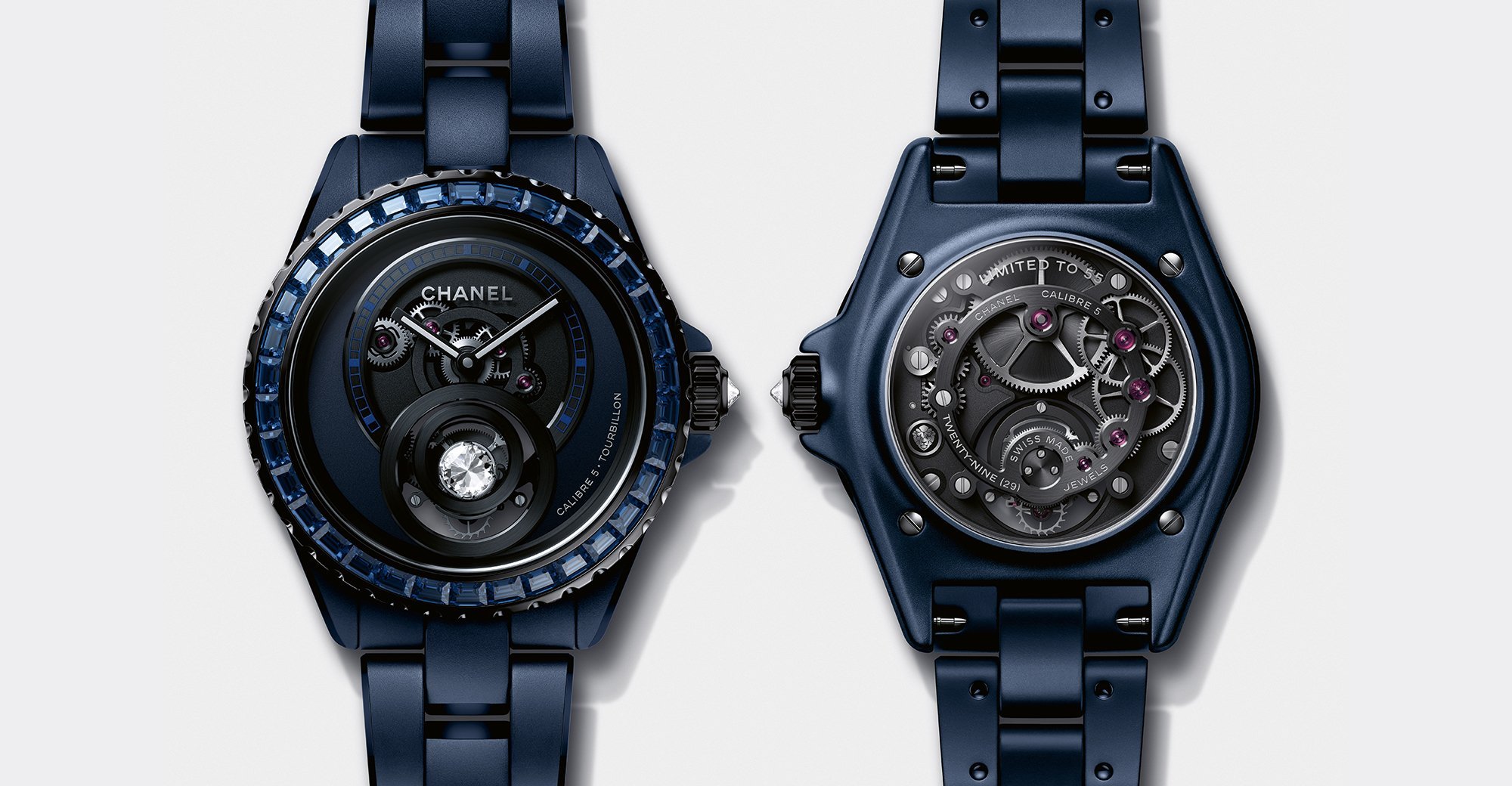
Midnight blue and black
Midnight blue and black. Matte blue ceramic with shiny black-coated steel. Transposing the quiet harmony, the subtle contrasts of this supremely sophisticated pairing into the J12’s ceramic robes would be no easy task. Ceramic is, after all, a form of high-tech alchemy and this was a “tuxedo” that would not be easy to create.
“Blue is, in itself, a challenge when applied to ceramic,” Arnaud Chastaingt continues. “I wanted a blue with a rigorous elegance. Not a red-blue or a yellow-blue. A blue that was almost black, a blue with nocturnal elegance. Materialising the desired blue in ceramic, feeling the emotion of that exact colour, implied a far-reaching exploration of technical possibilities. The collaboration between our Creation Studio in Paris and our Watch Manufacture in La Chaux-de-Fonds could not have been closer. The two worked hand-in-hand over five years until they succeeded. The only thing I could give the Manufacture was all the time they needed. Then one day, there it was. The blue exactly as I’d envisioned. A nocturnal blue, a black-blue, a matte blue. Our Chanel Blue.”

After selection of the various components, the stages in ceramic production are injection, debinding, sintering, machining and polishing, prior to assembly.
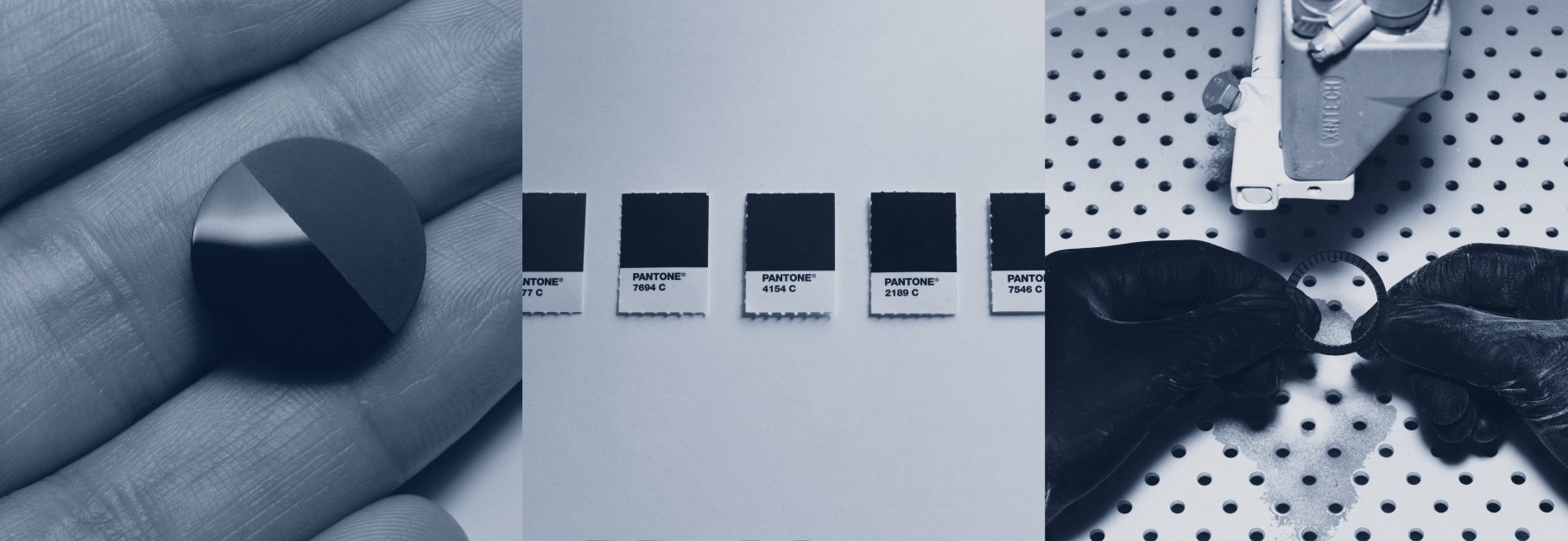
The zirconium oxide powder and pigments are mixed with a binder to produce the feedstock, which is injected at high pressure into steel moulds and heated to fusion to produce the bracelet links and the components for the watch head.
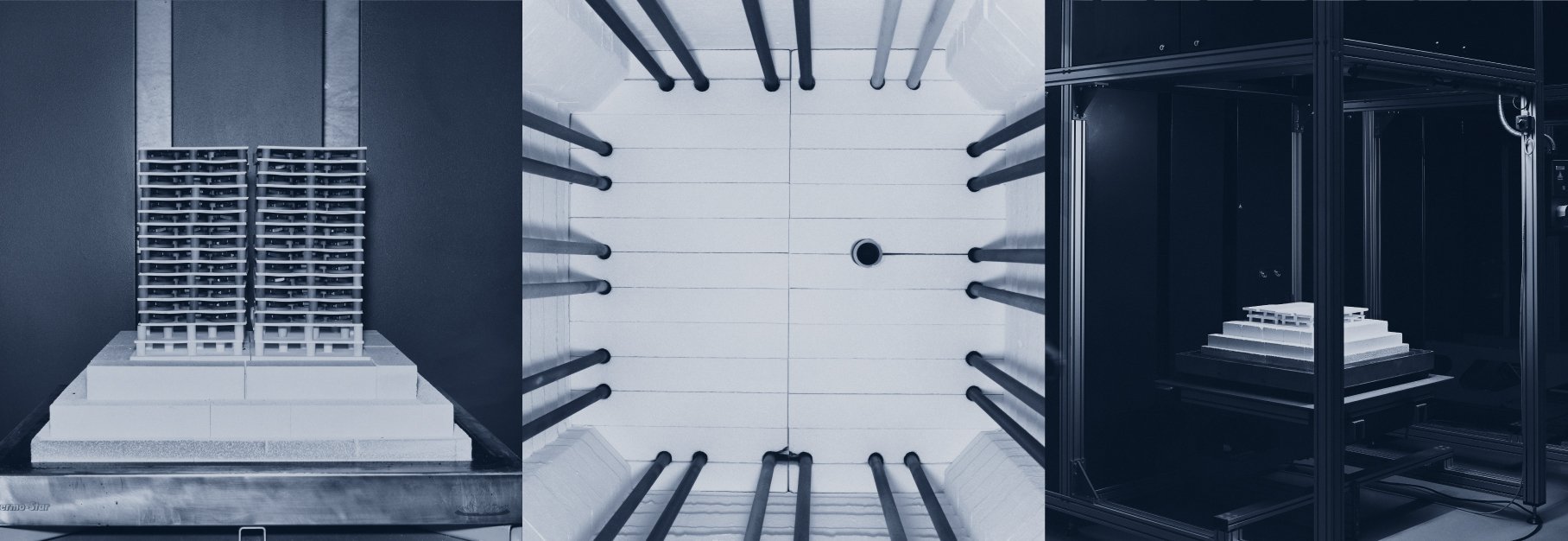
In a process known as debinding, the binder is removed from the moulded part in an acetone bath. Next, the piece is sintered to give it the required colour and final form. For this, parts are heated in furnaces over a number of days at 1,300°C.
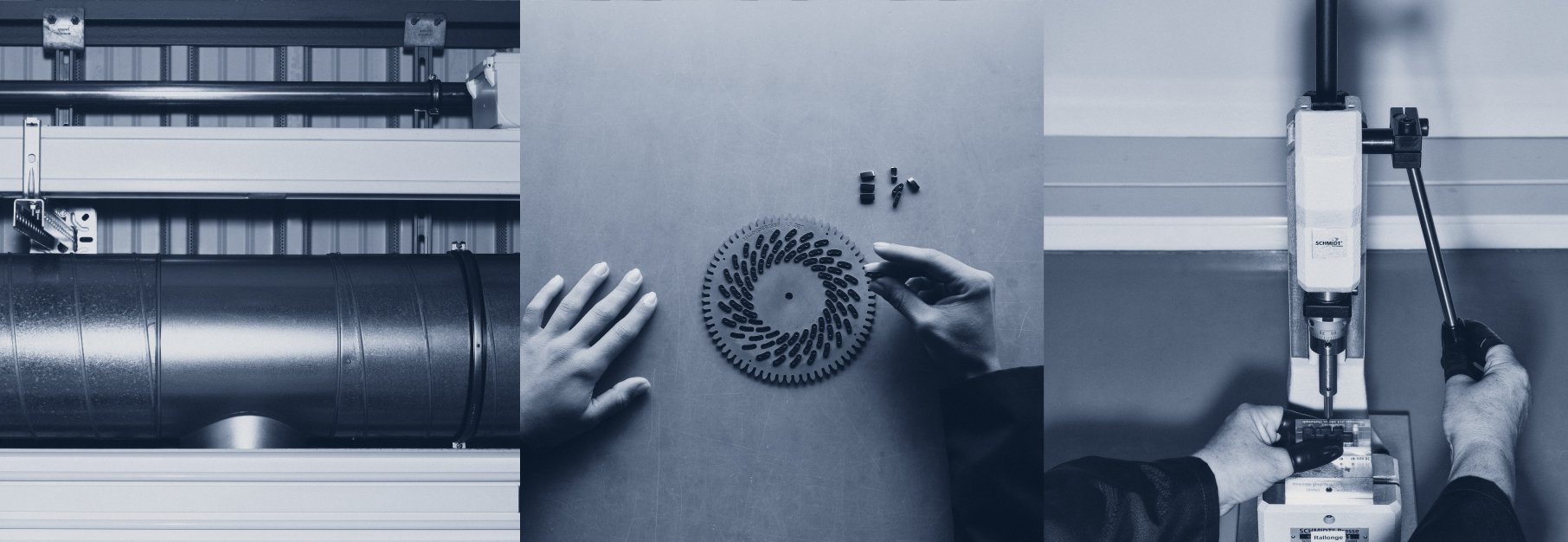
During this stage, the piece will shrink slightly to the exact required dimensions. This is also when the colour is fixed, although the end colour is determined at every stage in production. One difficulty resides in the choice of pigment, as certain pigments burn during sintering.
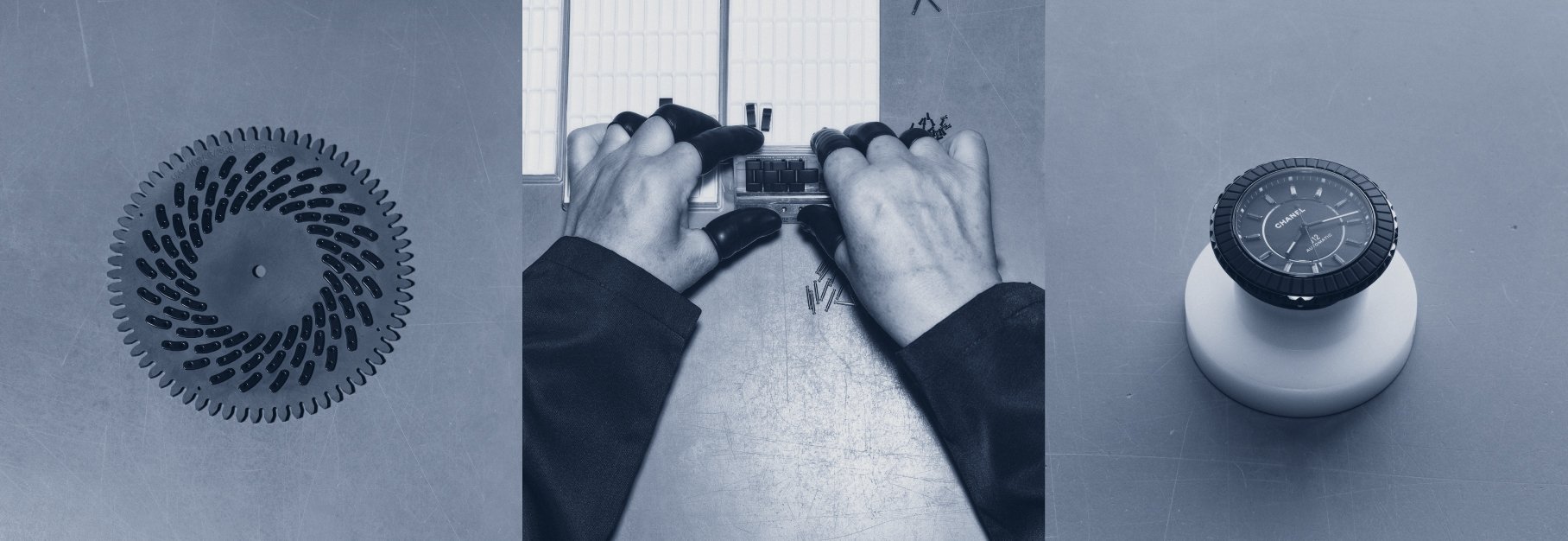
The machined part is deburred then polished in a rotating vibratory tumbler, filled with abrasive and soap, after which it is given a matte finish. It is now ready for assembly, carried out almost entirely by hand.
The Chanel Watch Manufacture
As early as 1993, Chanel acquired Châtelain Frères in La Chaux-de-Fonds: a specialist since 1947 in gold polishing and finishing, the manufacture of metal watch bracelets and gem-setting. Continuing to build on this expertise, the Chanel Watch Manufacture has grown to employ almost 500 people, skilled in 60 professions.
Under the Chanel banner, Châtelain went on to develop the technology to manufacture high-tech ceramic in-house, and in 2000 Chanel launched the J12: the watch that elevated ceramic to the rank of precious material.
In addition to its ceramic division, technical development, component production, polishing, gem-setting, assembly and testing have been brought under the one roof of the Chanel Watch Manufacture. There is also an important Haute Horlogerie workshop which, since the launch of Calibre 1 in 2016, has released nine in-house movements in 37 versions — one of which, Calibre 5, equips the J12 Bleu Diamond Tourbillon.
Formulating the perfect blue
It took the teams in charge of ceramic development and production no fewer than 24 iterations and 150 trials to overcome this complex alchemical and technical challenge, and achieve the desired blue.
High-tech ceramic is made from alums; in this instance zirconium oxide, a mineral in powder form which, when mixed with a binder and pigments, takes on unique properties. Exceptionally hard and durable, high-tech ceramic is scratch-resistant and withstands temperatures up to 2,000°C. It is also antimagnetic, insulating and biocompatible. These properties explain why ceramic is widely employed in the aeronautics and aerospace industries (such as for re-entry heat shields on spacecraft).
The Chanel Watch Manufacture is one of the few to master the entire manufacturing process.
A robust icon
Upstream of the finished product, the Chanel Watch Manufacture’s laboratory carries out a battery of tests that are specific to ceramic watches and the movements inside. Shock testing includes direct shocks, such as dropping the watch, and indirect shocks with some 11,000 shocks up to 5,000G — to give some order of magnitude, the shock experienced in a car crash is around 10G. Nor is this the end of the “ordeal”. Watches are placed in environmental and temperature chambers; subjected to accelerated ageing and tested for their resistance to magnetic fields, vibrations, traction, torsion, compression as well as water-resistance.
Excellence through collaboration
Returning to the livery and movement of the J12 Bleu Diamond Tourbillon…
Using elements supplied by the Watchmaking Creation Studio in Paris, the engineering design team works in concert with the 24 craftsmen and craftswomen employed in the gem-setting workshop. Each year the engineering design studio takes charge of between 50 and 60 projects and model references, 40% of which are to be set with precious stones — hence the tight-knit, continuous collaboration with the gem-setters. From drawings supplied by Arnaud Chastaingt and his team, the engineering design studio defines the diameter and size of the stones for setting. This can be setting with mechanical preparation, traditional hand-setting or a prestigious hammered setting.
Setting the stones on the J12 Bleu Diamond Tourbillon was a particularly challenging exercise that required a perfect match between the matte blue of the ceramic and the blue of the sapphires on the polished black-coated steel bezel. “Sourcing the exact, uniform shade that would harmonise with these elements was a long and painstaking task,” Arnaud Chastaingt recalls. “All the sapphires I was shown to begin with had a reddish tint. I had to keep on searching until I found this blue, with its refined and muted tones.”
This same subtle contrast of matte and shiny surfaces reappears on the flawlessly executed, triple-row bracelet. Finished to the highest standard, including bevelled edges, it too displays a captivating play of blue shadow and black light.
In search of the perfect diamond
At the heart of the watch, set on the flying tourbillon, a diamond sparkles against the black-blue of the ceramic dial. The gem-setters explain how “Arnaud Chastaingt wanted a diamond that would catch the eye but the engineering design studio calculated that, for reasons of weight and stability, it couldn’t exceed 2.5mm in diameter.” The design, however, was for a much larger stone; almost twice the size. “A 4.5mm diamond with a traditional cut has a height of four millimetres and there simply wasn’t the space for it on the tourbillon.”
Ultimately, the gem-setters found the solution: a bespoke cut with this exact diameter, whose brilliance and sparkle elevate this nocturnal timepiece.
Inside ticks the Chanel Manufacture Calibre 5 automatic movement with flying tourbillon. Treated with black DLC, it reprises the architectonics of the bridges and gears in a harmony of circular shapes which, since Calibre 1 in 2016, has become the hallmark of a Chanel haute horlogerie movement. The visual harmony between the watch’s face, its ceramic body and the design of its movement is unmistakable. An equation brilliantly demonstrated by the J12 Bleu Diamond Tourbillon.
J12 BLEU DIAMOND TOURBILLON
- Limited to 55 pieces.
- Matte blue highly resistant ceramic and black-coated steel case.
- Sapphire crystal caseback with “LIMITED TO 55” inscription.
- Black-coated steel fixed bezel set with 34 baguette-cut blue sapphires ( 4 carats).
- Blue openworked dial.
- Tourbillon cage set with 1 solitaire diamond with an exclusive cut ( 0.18 carat - F/G - VVS).
- Black-coated steel non-screw-down crown set with a brilliant-cut diamond ( 0.16 carat).
- Matte blue highly resistant ceramic bracelet with polished bevels and Black-coated steel triple-folding buckle.
- Calibre 5: CHANEL Manufacture mechanical movement with manual winding and flying tourbillon.
- Power reserve: 42 hours.
- Functions: hours, minutes.
- Complication: flying tourbillon.
- Water-resistance: 50 metres.
- Diameter: 38mm.
- Blue sapphires: 34 baguette- cut blue sapphires ( 4 carats). Diamonds: 1 solitaire diamond ( 0.18 carat) and 1 brilliant-cut diamond ( 0.16 carat).
- Number of components: 172.
- Tourbillon cage set with 1 diamond.
- Number of rubies: 29. Frequency: 28,800 vibrations per hour (4Hz).
- Balance shock protection system.
- Variable inertia balance.
- Diameter of movement: 28.40mm – 121/2’’’.
- Thickness of movement: 6.25mm.
- Carats and materials are for indication only.
- The values are non-binding.













